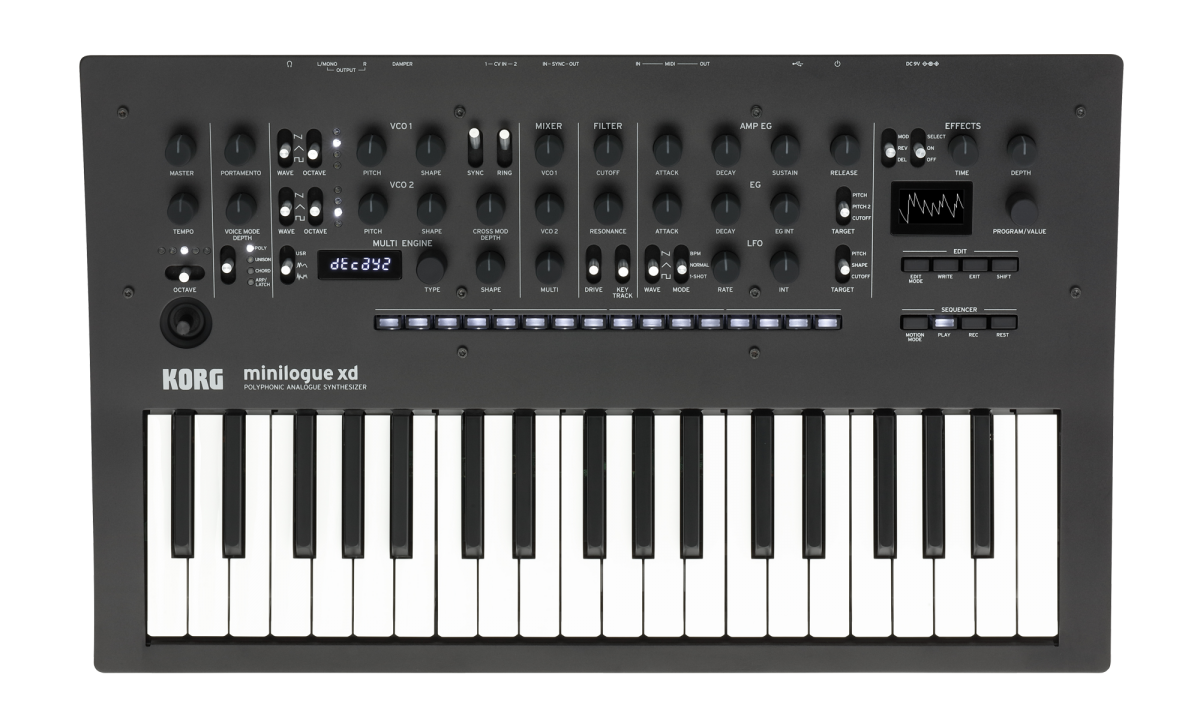journal2
Sorry to leave you hanging there! I was waiting in vain for new developments with Arturia.
I never heard back from “Maria” about the partnership offer. Arturia eventually replied to my DM on Twitter and told me to reach out to their artist relations team via email, which I did.
My email was primarily to report the potential scam, but if they really do want to partner with me, I’m game! You may remember I teamed up with ROLI a few years back for a giveaway, so it wouldn’t be unprecedented.
While I awaited some sort of resolution, I narrowed my hardware search to something I could actually afford, with the goal of better understanding and applying different forms of synthesis.
In most cases, I know what to tweak to get the sound I want, but I’ve never once used a sound I created from scratch in one of my productions. When it comes to audio production, acoustics, mixing and mastering, I’m as geeky as they come. So it feels a little lame to admit that I use synth presets. 😅
I’ve got a dozen softsynths I could practice sound design on, but what I really wanted was a knob-per-function hardware synth I could mess around with on the couch. I spend enough time on the computer already!

This beautiful beast from Korg was a strong contender. I played with the non-XD version at my local music store, and it was immediately accessible. I probably would’ve opted for the “module” version without a keyboard, since I’ve already got a keyboard controller.
I ultimately decided on the Arturia MiniFreak, which offers a lot more bang for your buck. And by “buck” I mean $599.
Not only can it arguably produce any sound the Minilogue XD is capable of, but there are several other types of synthesis included, and tons more modulation options and effects, all with a minimum of menu-diving.
What really sold me is the sequencer, which goes up to 64 steps. Of course, I’ve got infinite steps in my DAW, but the MiniFreak allows me to tweak parameters on a per-step basis, which would be tricky to replicate on the computer.
You can jump to the 8:00 mark to see exactly what I’m talking about:
I’ve watched a bunch of videos on the MiniFreak, and I think this one is the best at showing what it’s capable of:
The biggest pain point of hardware is getting sound into the computer. With almost any other synth, I’d need to record the line outs in real-time, just like recording any other instrument. Ain’t nobody got time for that.
The MiniFreak makes it drop-dead simple by offering a softsynth counterpart to the hardware, the MiniFreak V:

You plug in the hardware with a USB cable, hit the “connect to MiniFreak” button, and anything you do on the synth is replicated in software. The sound of the softsynth is the same as the hardware, so I never have to actually record anything.
As a bonus, if I ever decided to sell the hardware, I can still load and edit my projects with the softsynth.
Oops, I think I just accidentally partnered with Arturia to sell the MiniFreak! If you buy one, let me know so I can ask them for my cut. 😉
Whatever you do, don’t buy it on Amazon! The price is the same everywhere, but I figured I could at least get 5% back with my Amazon Visa.
I received an obviously used unit missing the outer packaging and USB cable. There were fingerprints all over the tiny display and the keyboard didn’t sit flat on a desk.
To add insult to injury, there were actual user presets stored in memory! They couldn’t even bother to perform a factory reset.
I returned it of course, worried that they wouldn’t accept it because it wasn’t in “new” condition. Fortunately, the replacement they sent was genuinely new.
I’ve had it for a couple of weeks now, and haven’t found time to play with it. Eventually I hope to share some sounds and sequences with you!
Anyway, that’s the MiniFreak, half of my album 14 arsenal. I’ll detail the other half in my next installment!
Let me know in the comments if any of this is remotely interesting to you. I won’t be offended if it’s not, promise. 🫠

As much as I love electronic/synth music, my knowledge of hardware and software is practically non-existent. It’s not that I’m not curious, as I’ve always been obsessed with synths from the moment I purchased my first Human League album in the early 80’s, but I’ve just never found the time, and most certainly never had the money to invest in anything that would be considered a quality set up. Instead, I’m living vicariously through your adventures and, even though I may not understand everything, I’m enjoying the journey.
That’s good to hear Jason! There are plenty of free software options, but there’s a serious time commitment no matter which route you go. I appreciate the comment!